It’s Not Easy Being Green, but It’s Never Been More Important to Try
During a press interview at one of our industry’s largest air shows this summer, an event organizer was asked by a reporter, “What is the event doing to reduce its carbon footprint?” The event organizer struggled to answer the question. Your sponsors and your audience expect a good answer.
Never before have event organizers had more obstacles to overcome in order to drive attendance, maintain safety and security, and achieve financial stability. Now, young ticket buyers have identified “sustainability” and other environmental concerns as among the top issues for the events industry to address.
“If we know better, we’ll do better,” says Katherine Lipsky, President of Food & Beverage for Red Frog. “If we’re serious about reaching out to a younger demographic, we need a plan; they’re insisting on it.”
Red Frog has already removed all Styrofoam, switched to paper straws, and eliminated cocktail napkins at their portable bars. They are working to eliminate single use plastics with new sustainable cups and utensils. Plastic table coverings are being replaced with nylon coverings that can be laundered. They recycle their grease for cooking and are currently switching to air fryers because they are not only greener, but because they are healthier for the consumer.
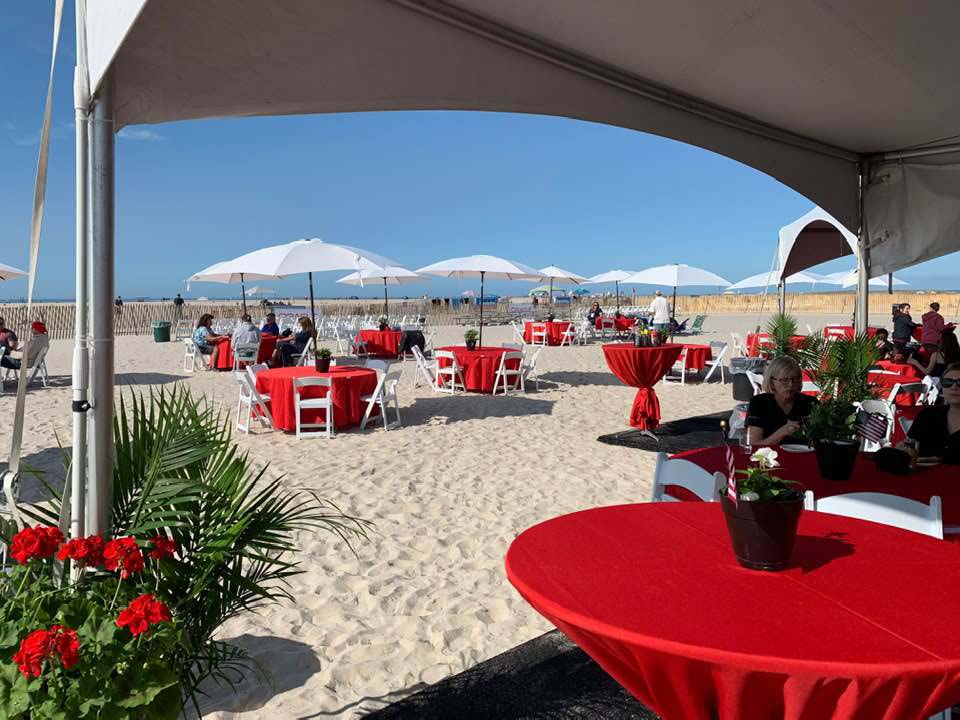
Although it might sound impossible to eliminate the existence of plastic, especially in major events like air shows, there are various methods that have been tried to control and reduce the plastic waste, as well as to educate air show attendees. Edible packaging is made from seaweed, from drinks to food wrappers and plates, which can be eaten or biodegrade naturally in four to six weeks. As for the drink stations, the endless plastic bottles can be replaced with compostable Vegware paper cups.
Concerning food, Lipsky says, “We are now looking at changing some of our buying to be more locally sourced, especially produce and meats, from locally sourced vendors near wherever we’re at. And we are establishing standards with incentives for third party vendors to source 30% of their products within 300 miles of the event.” Red Frog has also organized a food rescue plan; any good, useable food that is left over from one of their events is donated to local charities.
Katherine acknowledges there is a cost to taking these steps, “Yes, it is more expensive. It’s driving up costs a couple of percentage points, but I believe — in the long run — we’re going to see a reduction in our costs and for our clients. For example, if we can reduce the amount of waste we have, the event’s dumpster hauls are going to be reduced, so — at some point — it’s going to pay back.”
When Red Frog makes a proposal, Lipsky says, “One of our slides points out what we are doing to be more green and sustainable and how it makes the entire event greener and more sustainable as a whole.”
“Here at ICAS headquarters, we’re hearing questions and concerns about the environmental impact of air shows more and more frequently,” says ICAS President John Cudahy. “No matter how you feel personally, this is an important consideration to many people, including your spectators and prospective sponsors. It is no longer possible to simply ignore the issue and hope it goes away.”
At air shows, garbage and recycling can also be a safety issue. Air boss George Cline noticed lose garbage at this year’s Melbourne Air Show rehearsal and brought it up in his hot wash as a safety factor. Without a sufficient number of recycling receptacles, people were laying their recyclables beside the waste bins. The event organizer took action and added more recycling bins in time for the Saturday and Sunday shows, reducing the chance of FOD becoming a problem and providing his ticket buyers with what they were looking for.
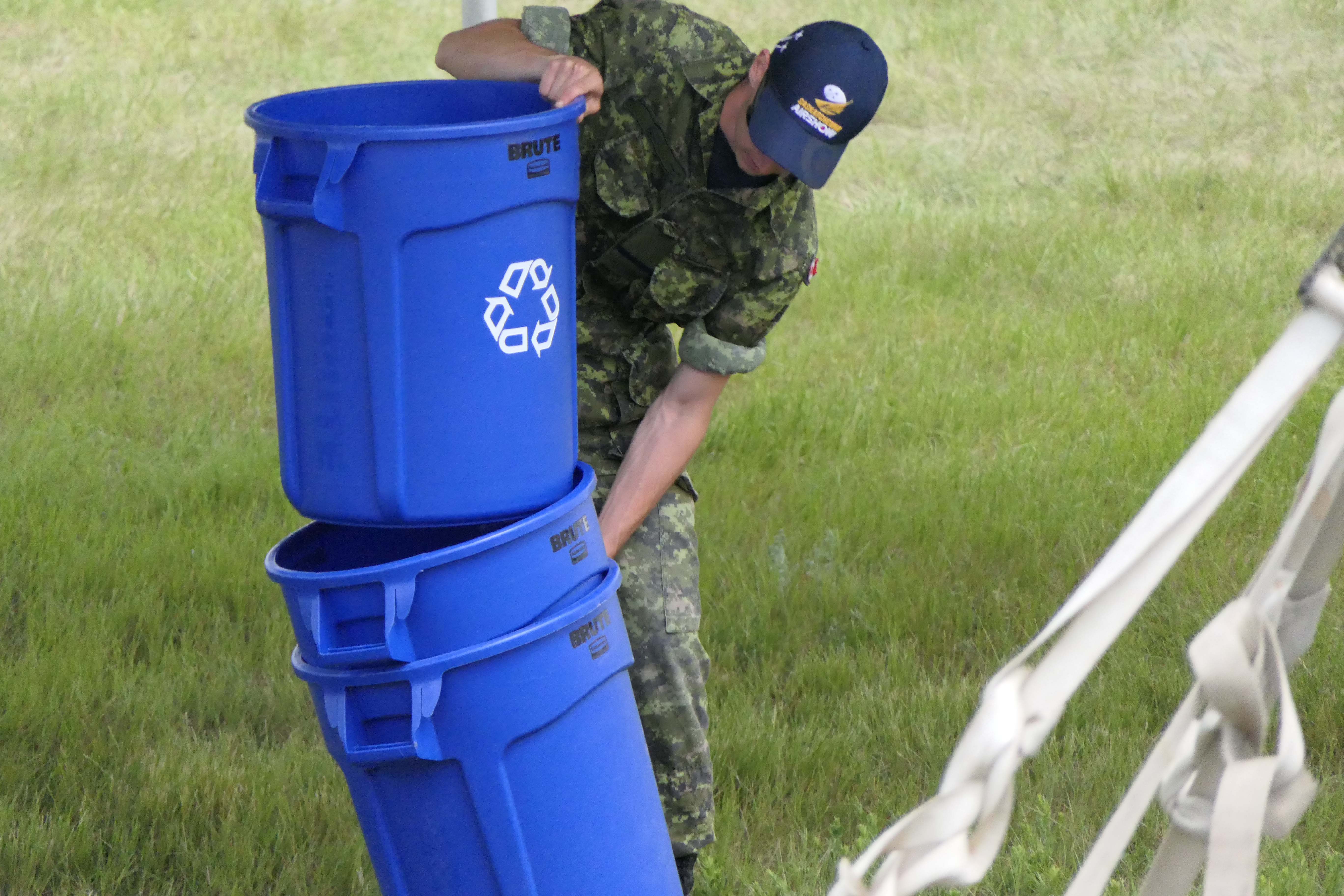
Darcy Brewer, who produces the California Capital Air Show in Sacramento, says, “We recycle 95% of our waste.” The show has won awards for it. “To accomplish our environmental goals each year at the air show, we partner with the Sacramento Regional Conservation Corporation, Sacramento’s largest education and workforce training program for young adults 18 – 25 years of age (https://www.saccorps.org/). They deploy the recycle bins for beverage containers. They collect, on average, two tons of empty beverage containers and use this as a revenue source each year,” Brewer says.
Water is also a precious commodity in California and the show doesn’t use water barrels to weight tents. Brewers adds, “We don’t allow straws, limit paper handouts, and prohibit plastic bags.”
Plastic is becoming one of the defining environmental issues of our time. Campaigners have warned that action on this issue must come from governments and businesses, but there is also a role that individuals and local groups can play. Make sure your event makes it easier for them all to do that.
Jim Breen and the Air Show Network have also made changes to use compostable or recyclable wears. A very extensive recycling program has been established on Marina Green, the main viewing site for San Francisco Fleet Week. Three types of bins are used for compostables, recyclables and trash. Beyond that, there is another sorting that occurs before they are put into the appropriate dumpster by a company hired by the Airshow Network called “Green Mary.” No straws are used, compostable cups and other recyclable materials are utilized. Caterers in the chalet area at Fleet Week use large water dispensers and specialized containers for cooking oils to be recycle.
Most cities like San Francisco and others with significant green initiatives now own water refill carts or “Water Buggies.” Military shows have been providing “water buffalos” for some time now so that water bottles can be refilled. With increasing environmental concerns, many counties and cities have been purchasing ‘Water Buggies” or similarly-named trailers that do the same thing. The buggy arrives at the event with its 375-gallon tank pre-filled with municipal tap water. At events where access is available, food grade hoses take water from the municipal water supply to continually refill the buggy.
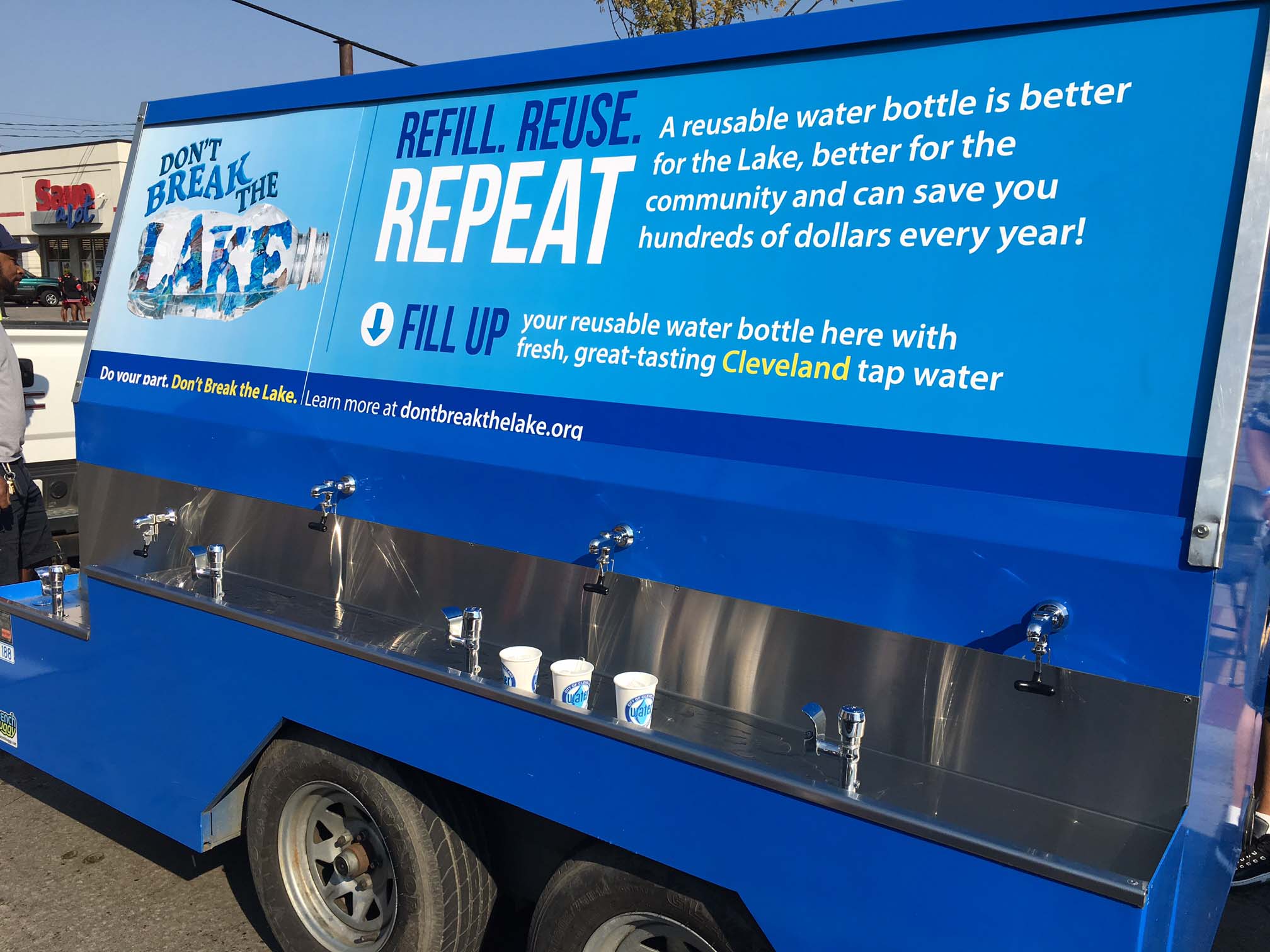
Wings Over Houston has managed their waste and recycling Texas-style by laying out a line of full-size dumpsters along the entire flight line between the chalet tents and concessions. Although the bins are large and take up real estate, they provide more space for advertising in a prime location. They are also easier to maintain throughout the day as they are rarely filled to capacity and are easy to empty at the conclusion of the show each day.
What Your Sponsors are Looking For
During a press interview at one of our industry’s largest air shows this summer, an event organizer was asked by a reporter, “What is the event doing to reduce its carbon footprint?” The event organizer struggled to answer the question. Your sponsors and your audience expect a good answer.
Never before have event organizers had more obstacles to overcome in order to drive attendance, maintain safety and security, and achieve financial stability. Now, young ticket buyers have identified “sustainability” and other environmental concerns as among the top issues for the events industry to address.
“If we know better, we’ll do better,” says Katherine Lipsky, President of Food & Beverage for Red Frog. “If we’re serious about reaching out to a younger demographic, we need a plan; they’re insisting on it.”
Red Frog has already removed all Styrofoam, switched to paper straws, and eliminated cocktail napkins at their portable bars. They are working to eliminate single use plastics with new sustainable cups and utensils. Plastic table coverings are being replaced with nylon coverings that can be laundered. They recycle their grease for cooking and are currently switching to air fryers because they are not only greener, but because they are healthier for the consumer.
Although it might sound impossible to eliminate the existence of plastic, especially in major events like air shows, there are various methods that have been tried to control and reduce the plastic waste, as well as to educate air show attendees. Edible packaging is made from seaweed, from drinks to food wrappers and plates, which can be eaten or biodegrade naturally in four to six weeks. As for the drink stations, the endless plastic bottles can be replaced with compostable Vegware paper cups.
Concerning food, Lipsky says, “We are now looking at changing some of our buying to be more locally sourced, especially produce and meats, from locally sourced vendors near wherever we’re at. And we are establishing standards with incentives for third party vendors to source 30% of their products within 300 miles of the event.” Red Frog has also organized a food rescue plan; any good, useable food that is left over from one of their events is donated to local charities.
Katherine acknowledges there is a cost to taking these steps, “Yes, it is more expensive. It’s driving up costs a couple of percentage points, but I believe — in the long run — we’re going to see a reduction in our costs and for our clients. For example, if we can reduce the amount of waste we have, the event’s dumpster hauls are going to be reduced, so — at some point — it’s going to pay back.”
When Red Frog makes a proposal, Lipsky says, “One of our slides points out what we are doing to be more green and sustainable and how it makes the entire event greener and more sustainable as a whole.”
“Here at ICAS headquarters, we’re hearing questions and concerns about the environmental impact of air shows more and more frequently,” says ICAS President John Cudahy. “No matter how you feel personally, this is an important consideration to many people, including your spectators and prospective sponsors. It is no longer possible to simply ignore the issue and hope it goes away.”
At air shows, garbage and recycling can also be a safety issue. Air boss George Cline noticed lose garbage at this year’s Melbourne Air Show rehearsal and brought it up in his hot wash as a safety factor. Without a sufficient number of recycling receptacles, people were laying their recyclables beside the waste bins. The event organizer took action and added more recycling bins in time for the Saturday and Sunday shows, reducing the chance of FOD becoming a problem and providing his ticket buyers with what they were looking for.
Darcy Brewer, who produces the California Capital Air Show in Sacramento, says, “We recycle 95% of our waste.” The show has won awards for it. “To accomplish our environmental goals each year at the air show, we partner with the Sacramento Regional Conservation Corporation, Sacramento’s largest education and workforce training program for young adults 18 – 25 years of age (https://www.saccorps.org/). They deploy the recycle bins for beverage containers. They collect, on average, two tons of empty beverage containers and use this as a revenue source each year,” Brewer says.
Water is also a precious commodity in California and the show doesn’t use water barrels to weight tents. Brewers adds, “We don’t allow straws, limit paper handouts, and prohibit plastic bags.”
Plastic is becoming one of the defining environmental issues of our time. Campaigners have warned that action on this issue must come from governments and businesses, but there is also a role that individuals and local groups can play. Make sure your event makes it easier for them all to do that.
Jim Breen and the Air Show Network have also made changes to use compostable or recyclable wears. A very extensive recycling program has been established on Marina Green, the main viewing site for San Francisco Fleet Week. Three types of bins are used for compostables, recyclables and trash. Beyond that, there is another sorting that occurs before they are put into the appropriate dumpster by a company hired by the Airshow Network called “Green Mary.” No straws are used, compostable cups and other recyclable materials are utilized. Caterers in the chalet area at Fleet Week use large water dispensers and specialized containers for cooking oils to be recycle.
Most cities like San Francisco and others with significant green initiatives now own water refill carts or “Water Buggies.” Military shows have been providing “water buffalos” for some time now so that water bottles can be refilled. With increasing environmental concerns, many counties and cities have been purchasing ‘Water Buggies” or similarly-named trailers that do the same thing. The buggy arrives at the event with its 375-gallon tank pre-filled with municipal tap water. At events where access is available, food grade hoses take water from the municipal water supply to continually refill the buggy.
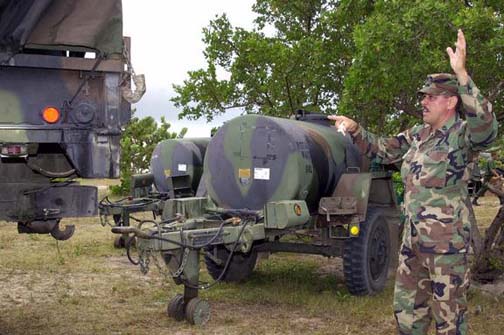
Wings Over Houston has managed their waste and recycling Texas-style by laying out a line of full-size dumpsters along the entire flight line between the chalet tents and concessions. Although the bins are large and take up real estate, they provide more space for advertising in a prime location. They are also easier to maintain throughout the day as they are rarely filled to capacity and are easy to empty at the conclusion of the show each day.
It’s Key to Attracting a Younger Crowd
Climate change is the Millennial generation’s top concern for the third year in a row. Most have told various pollsters they would be willing to change their lifestyle to protect the environment.
Simple touches say a lot, so think about the little details that enrich the social good delivered by your event and elevate the reputation of the sponsor. In today’s world of democratic and pervasive social media, more than ever, it is critical for event professionals to anticipate sustainability concerns, particularly when it comes to creating appropriate sponsor partnerships, finding ways to involve spectators/participants, and being transparent about what you’re doing as an event.
“Attracting Millennials and young adults from Generation Z is key to the long-term viability of our air show industry,” says Cudahy. “Taking environmental issues seriously is an essential first step in that direction. But, perhaps more importantly, failing to take that step could be a mistake from which our industry will never recover.”
Transportation
Consider your comings and goings. Incorporate eco-friendly transportation options into your events and offer incentives for attendees to use them. Coordinate ride sharing for event attendees or encourage eco-friendly vehicles. Some of the European air shows offer incentives for those who car pool or ride their bikes to the events.
For your show, consider providing a bike valet, giving bus passes or free parking for those who carpool or offering incentives to those who drive hybrid or electric vehicles to your air show. While not all attendees will take advantage of these options, those that do will appreciate the effort.
Fuel Consumption
Reduce the amount of time flying. Performers and event organizers can reduce their carbon footprint, be more in line with what the audience expects these days and save money. Less is now MUCH more as attention spans continue to shrink. Event organizer Bryan Lilley notes, “3 p.m. to 4 p.m. at an air show is like 1 a.m. to 2 a.m. at a bar; people start to leave and there isn’t much you can do about it even if you’re the Blue Angels. Our traffic analysis shows it. The kids are burnt. It’s been a long day in the sun with lots of walking. And the audience is toast. The shows we wrap up before four o’clock see the crowd staying until the end.”
If performers reduced their time on stage — including the jet teams — the same number of performers would be hired, you’d be more in line with those ever-shrinking attention spans, reduce your carbon footprint and save money on fuel and smoke oil.
Smoke Oil
Communicate clearly what smoke oil is, why it is used at your air show and that it is EPA approved in the U.S. An aerobatic performer typically goes through about five gallons of smoke oil during an air show performance. A warbird such as a North American T–6 burns three or four times as much. Coming out the back-end of an air show aircraft while tens of thousands of spectators watch and record video, it strikes some as the embodiment of pollution…even though nearly all smoke oil is paraffin-based and has no deleterious effect on the environment.
So, we must pro-actively tell our side of the story.
In mid-July, a national news website used a photo of an air show airplane billowing smoke to illustrate a story about the poor air quality in a particular U.S. city that hosts an annual air show. Without specific, truthful information about the true nature of air show smoke and smoke oil, the media will create a story that fits their narrative. When ICAS approached the publication and explained that the smoke was not harmful to the environment, the website pulled the photo off of their site.
Putting an item in the Frequently Asked Questions section of your website that explains smoke and smoke oil will help address the concerns that some environmentally-conscious spectators might have about the smoke that is so prevalent in the acts of most air show performers.
Conclusion
Take a little time to consider and implement environmentally-savvy options for your event. Be proactive in communicating those options. By choosing to go green at your air show, your brand shows attendees the choices you’re making and helps make them feel like they are a part of the positive changes they’re affecting. This will create positive affinity for your show’s brand and the brands of those organizations that sponsor or are closely associated with your event. By influencing and encouraging your attendees to implement sustainable practices into their own lives, your brand will leave an impact on the environment that will last long after your air show is over.
Ten Things You Can Do
- Provide, maintain and clearly identify recycling and garbage bins and make sure your announcer mentions them.
- Provide water stations for refills.
- Reduce flying hours.
- Use recyclable materials.
- Invite your sponsors to exhibit and showcase their environmental initiatives.
- Include your wildlife BASH control people in your show.
- Include green initiatives on the FAQ webpage or social media.
- Communicate your green message. By sharing and promoting your eco-friendly actions, you are connecting with younger ticket buyers while promoting environmental sustainability.
- Introduce green transportation initiatives like savings for those who take transit or bring their bike.
- Limit paper handouts; use electronic alternatives like QR codes or VR exhibits.

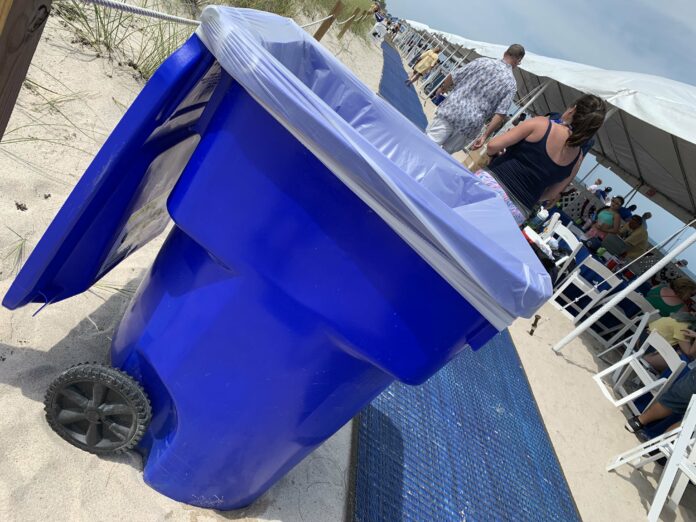







Great article Ric!
As you are aware, Red Frog Events the parent company of Red Frog Food & Beverage unexpectedly closed up shop on July 30th. I re-opened my prior business of 20 years (BeeSavvy), and created a new division (Elevate) that caters specifically to the Air Show marketplace offering concessions, catering, merchandise, seating, chalets, ticketing and sponsorship sales. We are continuing our mission of leading the industry in Sustainability. In recognition of this, Elevate is sponsoring the App at the iCas show in December. Utilizing technology to reduce our carbon footprint, while keeping us all tied into the real time activities of the iCas trade show.
As the name of the division indicates we are providing an ‘Elevated’ air show platform that appeals to the new era of air show patron, while recognizing and catering to the existing demographics that the industry was built upon. -Katherine Lipsky
Comments are closed.